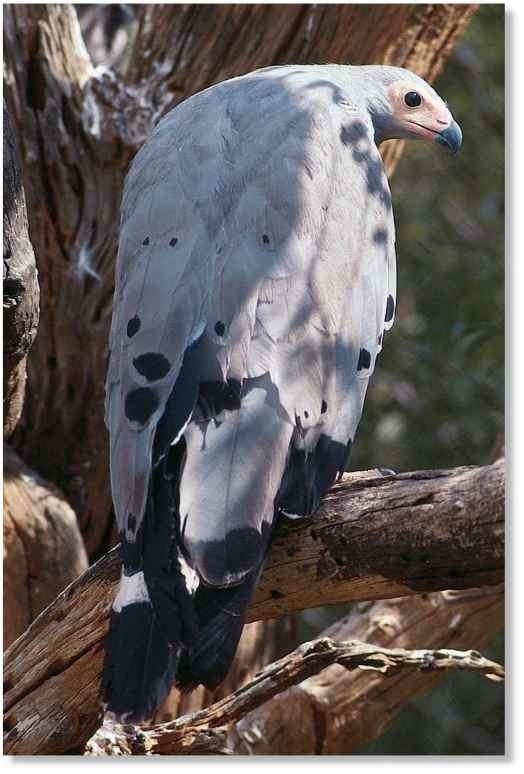ORDER
Falconiformes
FAMILY
Accipitridae
GENUS & SPECIES
KEY FEATURES
• Specializes in flying very slowly, nearly stalling, while scanning the ground for its small prey
• Unique double-jointed knees allow it to grab victims from deep inside holes, cracks and crevices
• its broad wings, long tail and long legs present a large, formidable figure despite its small size
WHERE IN THE WORLD?
Found only in Africa: South Africa, east to Natal, north to Botswana, northern Namibia, Zimbabwe and Mozambique, then north to the Sahara Desert

Lifecycle
The African harrier hawk is like many other raptors, except for its unfeathered face, which blushes to a deep red when startled or during mating displays.
HABITAT
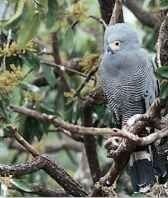
The African harrier hawk frequents a variety of landscapes throughout its range in central and southern Africa, including forest, woodland and savannah. It is most often found at the top of tall trees fringing the larger rivers or in hilly country where there are deep ravines and steep hillsides.
The African harrier hawk is also known as the gymnogene, which means bare cheeks.
Only found on the island of Madagascar, the Madagascar harrier hawk is sometimes considered to be just a subspecies of the African harrier hawk.
Tree house The harrier hawk prefers to perch in tall trees.
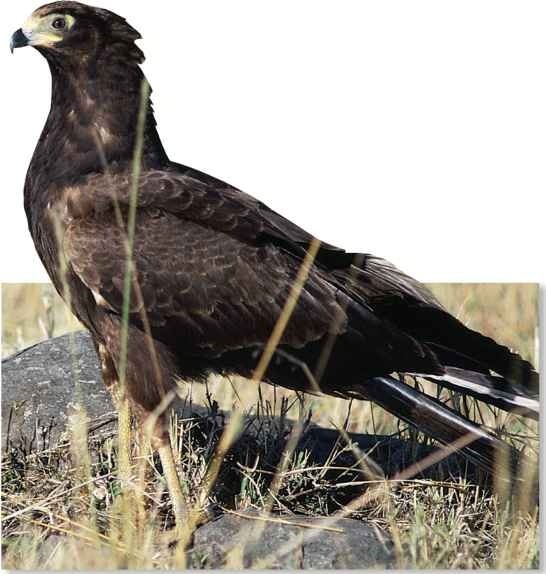
BREEDING
Courtship for the African harrier hawk occurs in the air. At the onset of the breeding season, the pair can be seen soaring together in display flights involving shallow dives and upward swoops accompanied by drawn-out whistles.These displays usually end in a long glide to the nest area.
The stick nest is built in a tree by both sexes, usually from 30-150′ from the ground, and is lined with green leaves. Usually 2 eggs are laid and both sexes incubate. After about 35 days, the eggs hatch at different intervals and the younger sibling usually dies ^ High in the sky of starvation as its older sibling The surviving chick fledges takes all the food. between 49-60 days.
BEHAVIOR-
The African harrier hawk’s most unusual behavior is that it blushes. Whereas most raptors have feathered faces, this hawk’s face is unfeathered to assist it in probing into holes for food. Unexpected disturbances, such as a branch snapping, can trigger the face (normally pale yellow) to blush a deep red. Encounters between breeding pairs also result in blushing; this is believed to represent an appeasement signal, especially during courtship, and switches in incubation duty
Taking a break
The hawk lands to rest and scans the area.
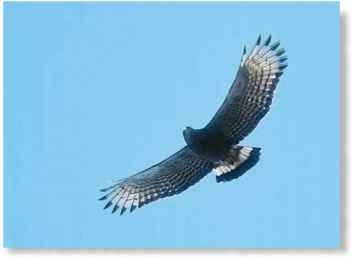
FOOD & HUNTING
The African harrier hawk seeks out elusive prey. With its ability to bend its legs forward and backward, this hawk can reach deep into holes or crevices and grab prey that is safe from other raptors.The African harrier hawk shows a variety of hunting skills: it climbs around on the branches of trees, using its wings for balance; it hangs upside down for long periods of time as it explores nooks and crannies for a hidden meal; it soars slowly along the edge of hillsides and ravines and scans carefully for potential prey.
Unlike other raptors, this hawk is not a very powerful bird and normally settles for prey about as large as a lizard. In certain parts of its range, the African harrier hawk is known to eat the fruit of the oil palm, but mostly its diet consists of lizards, small birds, insects and rodents.
OPPORTUNISTIC RAIDER
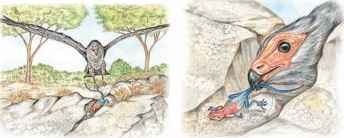
1 Chase
Spotting an agama lizard on the ground, the harrier hawk swoops down to try to snatch the lizard with its outstretched talons.
2 Wedge
Failing to catch the lizard, the hawk pushes its head into the rock crevice and grabs the lizard with its bill.
CONSERVATION
Although population numbers are unknown, the African harrier hawk is fairly common throughout its entire range and is not currently in danger.As are all members of the hawk family, the African harrier hawk is protected by law from hunters and is not allowed to be kept without a per-mit.The African harrier hawk and the other member of its genus, the Madagascar harrier hawk (Polyboroides radiatus), are both listed in Appendix II of CITES (Convention for International Trade in Endangered Species of Wild Fauna and Flora) and are not allowed to be exported.
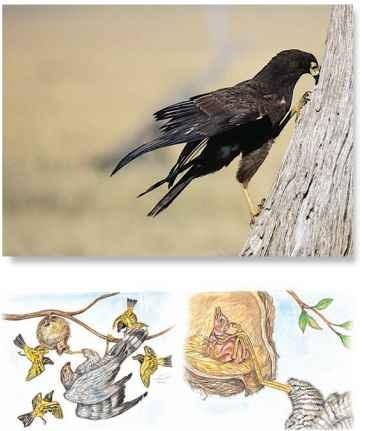
3 Hang
Flapping its wings for balance, the hawk hangs upside down by one foot and reaches into a weaver’s nest with the other.
4 Raid
Bending its leg backward, the African harrier hawk is able to reach deep into the nest to snatch a nestling.
PROFILE
African Harrier Hawk
The African harrier hawk is uniquely equipped for a life as a stealthy hunter; it has extremely keen vision for locating elusive prey.
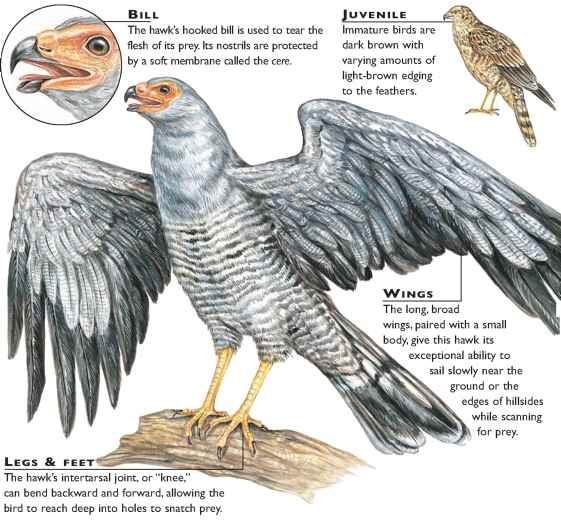
CREATURE COMPARISONS
At 20″, the eastern chanting goshawk, Melierax poliopterus, is slightly smaller than the African harrier hawk.The goshawk inhabits dry open woodland and semi-desert areas of eastern Africa, compared to the forest, woodland and savannah habitats of the harrier hawk The goshawk’s feeding methods differ from the harrier: it feeds mostly on lizards and insects that it spots from a perch, or the goshawk may take small birds after a vigorous pursuit. This contrasts with the harrier hawk, which extracts its prey from holes or flies slowly when searching for prey

African Harrier hawk
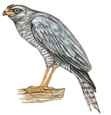
Eastern
Chanting goshawk
| VITAL STATISTICS | |
| Weight | About 2 lbs. |
| Length | 22-25″ |
| Wingspan | About 5′ |
| Sexual Maturity | Unknown |
| Breeding Season | Spring and Summer |
| Number of Young | Usually 2, but only 1 survives |
| Incubation Period | About 35 days |
| Fledging Period | 49-60 days |
| 1 Breeding f Interval | 1 year . |
| Typical Diet | Lizards, birds, insects and rodents |
| I Lifespan |
Unknown |
RELATED SPECIES
• The family Accipitridae contains 208 species of eagles, hawks, kites and Old World vultures. The African harrier hawk shares its genus, Polyboroides, with the Madagascar harrier hawk, P. radiatus. Other species of hawk include the red-shouldered hawk, Buteo lineatus, the red-tailed hawk, B. jamaicensis, and the sharp-shinned hawk, Accipiter striatus.
